|
In the old days, there was no curbside trash pickup. Indeed. The proper scenario would have been that our forefathers would
have selected an area not to far from the house. Probably about 50 feet or so. The dump site would be used to get rid of bottles,
pots, broken tools, andd other household items that lost their usefulness.
The homesteader would have possibly buried the site under dirt to conceal its "ugliness" or not. If not,
then time would take care of it. Hiding all the delectable items from view for years. Decades and centuries as well.
Then one day, during the Spring thaw, a piece of blue glass breaks the surface as frost heaves do their part to bring
it to the surface. Ther it sits, on the surface until the right person comes by and recognizes that the broken piece of cobalt
is a clue to something long forgotten. A possible dump site.
I have always had the habit of scanning the grounds surface as I walk. Because of this practice, I have found things
that others don't even notice. I love scanning the ground. whether it's in the woods, a back yard, the beach, or a parking
lot. It doesn't matter. I have filled a lot of shoe boxes and display cases with items found because i scan the ground.
For some reason, marbles just seem to show up under my feet. Glass and clay marbles. I have found jarfuls of marbles
over the years. I will look around an area and BINGO... a marble. It makes my day every time.
Clay pipes are another interesting find. When I was young my grandfather would take me down along the banks of the
Merrimack River in Lawrence, MA. I remember filling a bucket with old bottles from behind an old tavern. I then started picking
fragments of old clay pipes out of the dirt. It was very "colonial" to me and I pictured the person who used it.
I was hooked. Hooked at an early age. From then on, every time that I would visit my grand-parents, I would shoot across the
street and down the banking.
I have seemed to learn over time where the dump sites would be. The internet is crammed with information on bottle
dumps. Not just bottles come from these sites. Coins, china fragments, buttons, jewelry, and other items can be found.
Pay attention to the type of items you are finding. Plastic should tell you that the area is not as old as you would
think. I would tend to stop searching at that point.
Filling holes is very important at sites. Marring a site is the worst thing you can do. Learn as much as you can from
each item you recover. Are you in it for profit or knowledge?
If you come across anything of historic value, stop the dig and contact the proper authorities. Do not remove the item
from the ground. Photograph the item as you found it if at all possible. Human remains should never be moved. Archaeologists
will be able to retrieve valuable information if the remains are undisturbed.
Tools to bring to a dump site would be a shovel, a screen sift, a light pick hammer (a masons hammer works fine)and
a five gallon bucket. I bring a digital camera, and a metal detector with me when I go bottle digging.
Scan the ground when you arrive and look for fragments of glass, pottery and china. Broken or not, old china patterns
are interesting. Save everything. Catalog your finds and try to identify those unknown items. Thats where the fun is.
| Tom Lynch in the field. |

|
| Working the "shitpile" on a Spring day. |
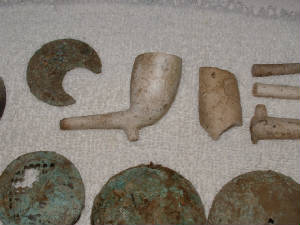
|
 |

|
| Bromo-Selzer bottles are always intersting finds. |
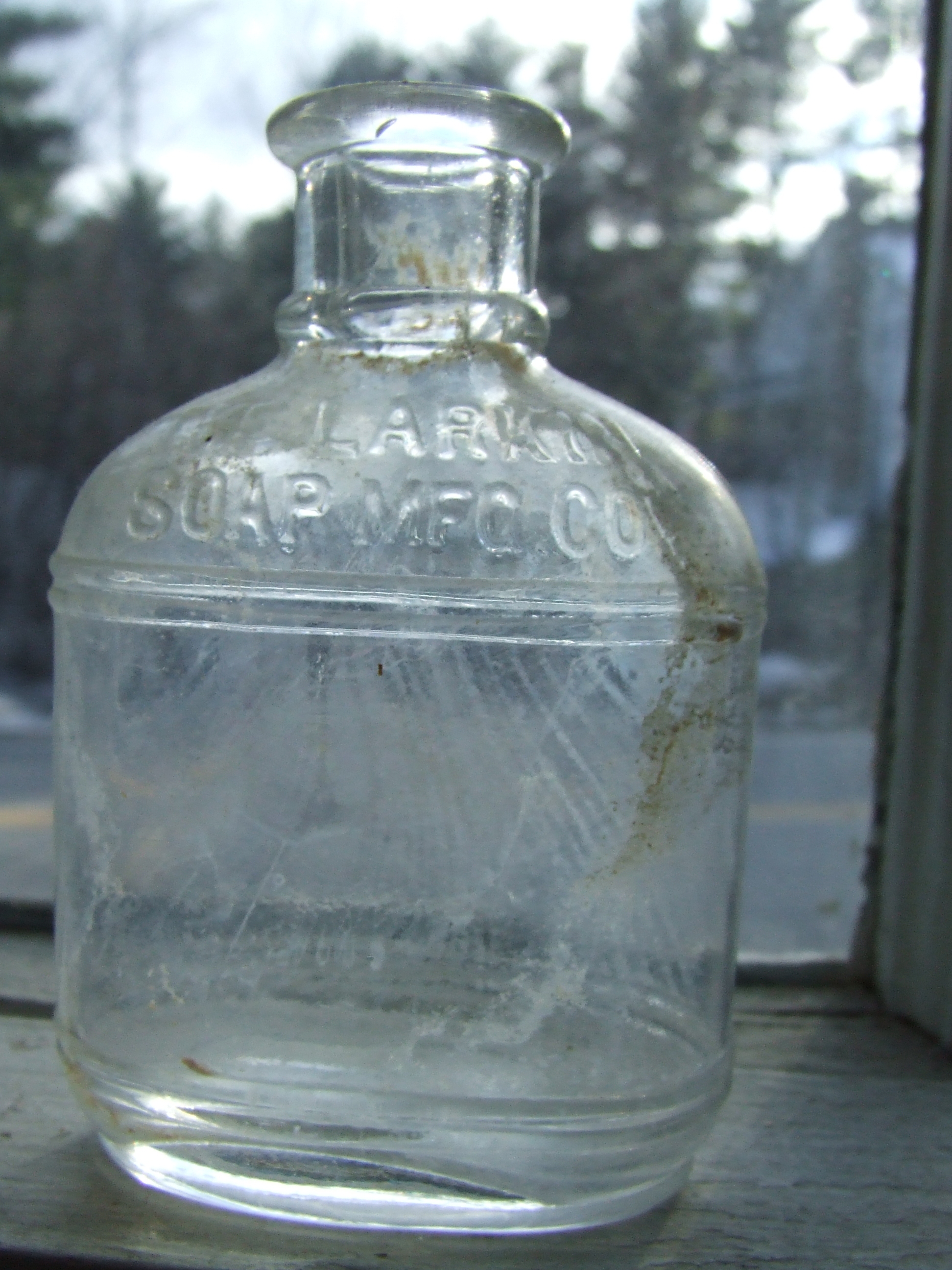
|
| Larkin Soap Co. produced beautiful bottles. |
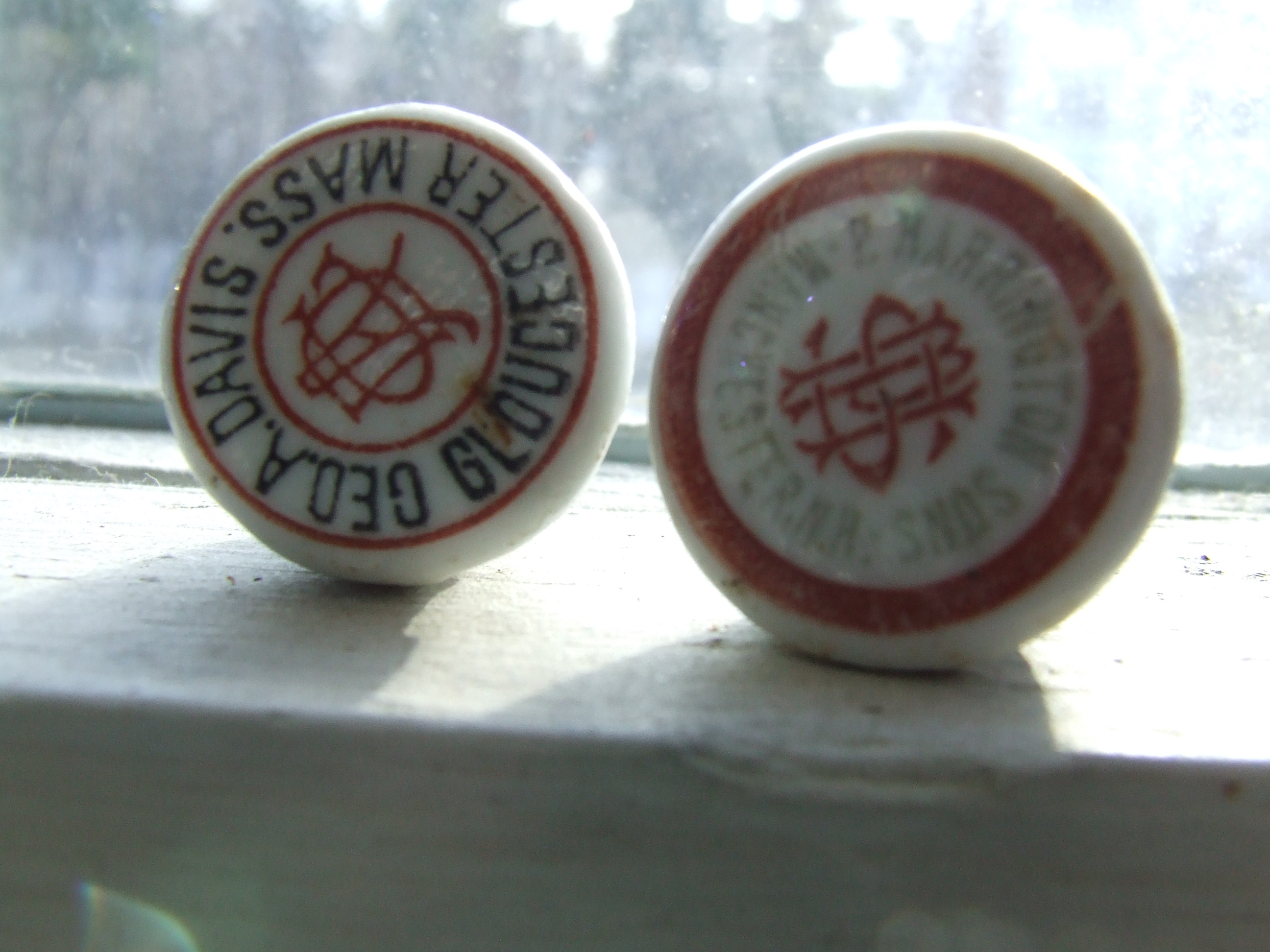
|
| These ceramic bottle stoppers were found underfoot. |
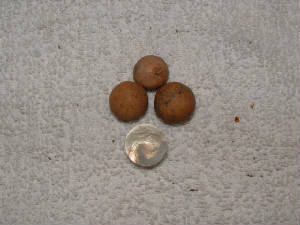
|
| Marbles are always showing up. |
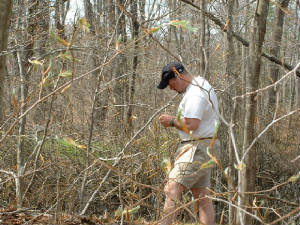
|
| Inspecting a find on the "shitpile". |

|

